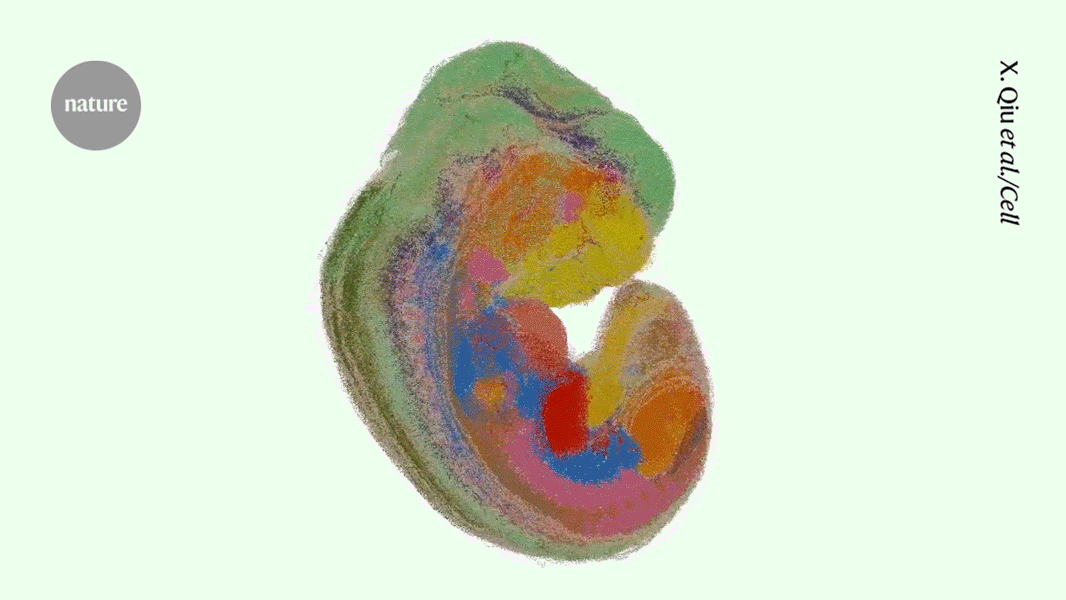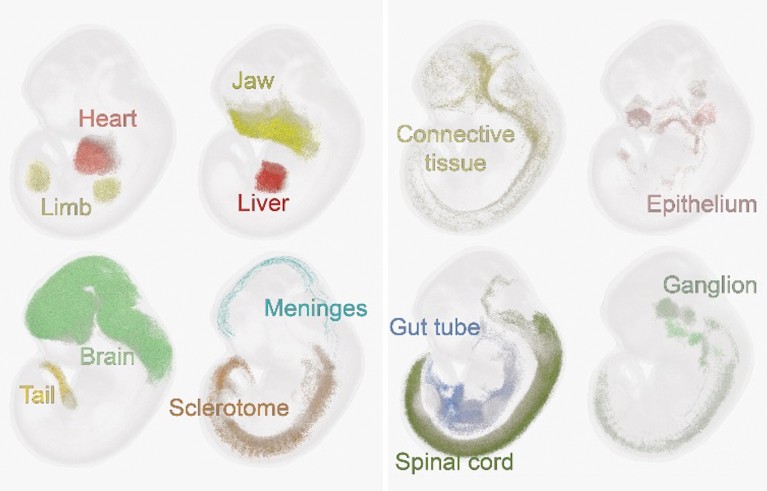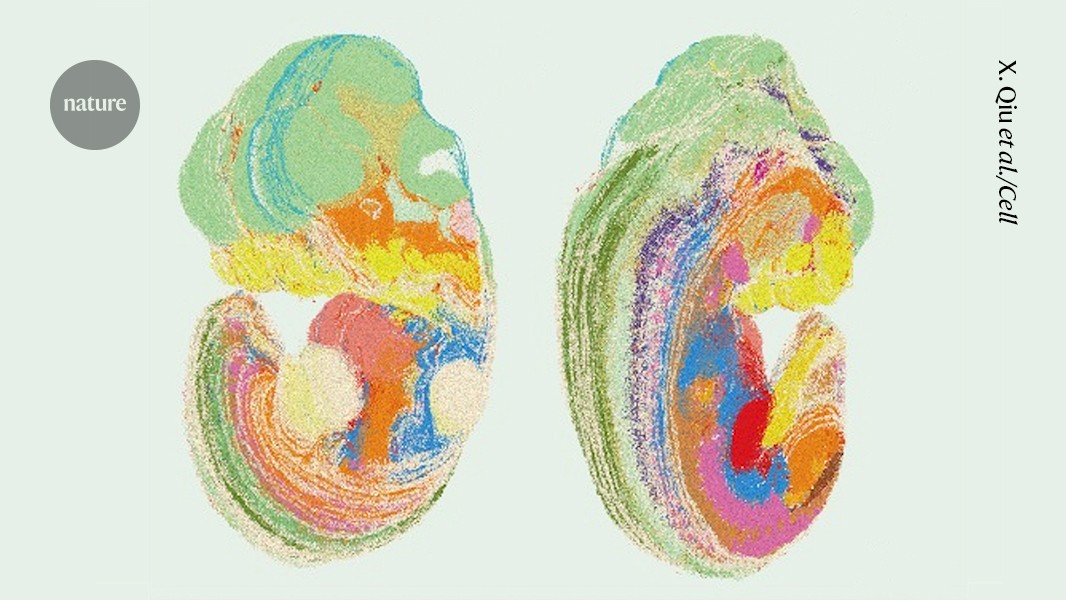Researchers have created the most detailed 3D cellular map yet of a mouse embryo, visualizing close to eight million cells1. The map shows how cells interact and migrate in an embryo less than two weeks after conception, and could help researchers to identify causes of congenital diseases.
The map reveals the structures of every major organ developing in the embryo, from the brain to the heart and the spinal cord. It visualizes intricate emerging structures in the neural tube, the progenitor of the central nervous system, and the asymmetrical movements of cells forming the four chambers of the growing heart.

“It captures a tremendous amount of cell complexity that will be very important for researchers worldwide exploring mechanisms of mouse development,” says Miguel Esteban, a stem-cell biologist at the biotechnology company BGI Cell in Shenzhen, China.
The work is described in Cell today.
To develop the ‘virtual’ embryo, Xiaojie Qiu, a geneticist at Stanford University in California, and his colleagues built a model named, Spateo, which stitches together multiple types of data. This includes the transcriptome — or the entire set of RNA molecules involved in protein synthesis — for every cell in a slice of embryo, collected for about 90 tissue slices at two time points. The researchers were able to locate and record the transcription profiles for every cell across space and time.

3D images of developing organs in the mouse embryo.Credit: X. Qiu et al./Cell
The team recorded the behaviour of a total of 7.8 million cells in a mouse embryo at 9.5 and 11.5 days after fertilization — a time when most mouse organs are forming. “We are the first to achieve this whole-embryo visualization at true single-cell resolution for mouse embryos” at developmental stages with so many cells, says Qiu.
Spateo could be used to create maps for any species, including using data on human embryos and organs, says Esteban. “This approach will become the norm” as the technology it relies on becomes cheaper and quicker to use, he says.


